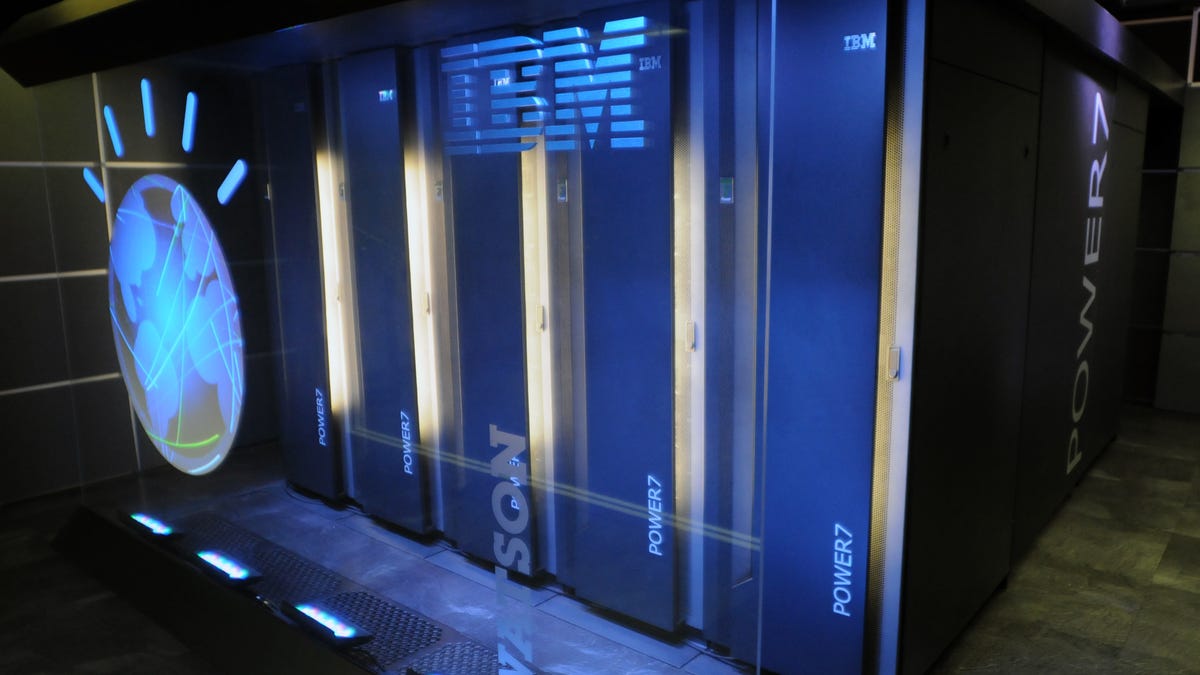One year later, IBM Watson goes to work (and the cloud)
IBM Watson's superbrain and evidence-based decisions are coming soon to a cloud near you.

What started out as a research project at IBM has become not only an unbeatable "Jeopardy" champion but also a new line of business for Big Blue. And it's coming to the cloud.
IBM's Watson project proved a big hit when it appeared as a contestant on "Jeopardy" one year ago and proved that machines are indeed smarter than man (I for one welcome our robot overlords.)
And now, IBM is taking Watson to the next level, having created a commercial business unit working to offer Watson both on-premise and as a hosted cloud service.
Manoj Saxena, general manager for IBM Watson Solutions, told CNET that Watson started as one of IBM's "grand challenge" projects that the company takes on to drive innovation. Watson was initially designed to take on natural language, but what made it interesting to the world at large was the systems' ability to work in a humanistic fashion.
According to Saxena "the underlying idea was more about being able to run an open domain search across unstructured data" which lead to the Jeopardy use-case as an example of creating a probabilistic system."
This humanistic approach was obviously interesting to see demonstrated on "Jeopardy," but it really represents an important development in machine learning as systems of computing power shift machines from tabulating to computing and now to reasoning.
But to get a system to a state of reasoning is no small task. Saxena highlighted three primary things that Watson does:
- Understands human language and meaning at massive scale
- Generates evidence based hypothesis
- Learns from the responses
The completion of the loop is what reveals the discovery and Watson aims to remove bottlenecks to reliable and repeatable business resolutions. According to Saxena, the difference in outcomes can be massive. This is the same for financial services or healthcare. There are multiple concepts where there is so much unstructured information it is humanly impossible to parse the data.
In late 2011, IBM inked a deal with health insurer WellPoint to use the Watson technology as part of a new program to help improve the quality of patient care and help reduce costs.
Using health care as example, Saxena explained that Watson goes through two stages: teach and run.
- Teach Watson--in this phase training and guideline material is fed into Watson at enormous volumes. After Watson completes the initial consumption the next stage is to have users (both literally and figuratively from notes and such) start asking the system questions. This phase is a subscription model.
- Run Watson--once companies have Watson up and running, the tasks are more outcome-based. IBM takes a percentage of the dollars saved (or earned) by the participating companies.
Saxena suggests that the overall goal for any analytically driven system is to drive toward evidence-based answers, which is an evolution of what we get now from Google.
"What Google is to search, Watson is to discovery. If I'm a doctor and ask Google a question about medicine it gives me results but doesn't really give me an answer that I could use immediately," Saxena said. "With the advent of tablets and mobile, the entire user experience has changed and we have a way to make answers immediately actionable."
The ability to have answers that create actions is something that every company is looking at these days and is part of the interest in big data products that has swept the enterprise ecosystem.
To that end, IBM is also investing in education programs with a number of universities around big data, analytics, machine learning, linguistics, and humanities to advance the curriculum around new sciences in general.

